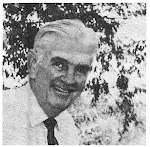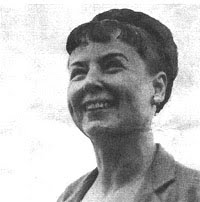Few people realize there was a period when Holling Clancy Holling worked at the iconic Walt Disney Company. Holling and Lucille had moved west from Chicago to Altadena, Cal., in 1938, and subsequently to Pasadena. He had published Tree in the Trail for Houghton Mifflin in 1942, but Seabird wouldn’t appear until 1948. Disney had released Dumbo in 1941 and Bambi in 1942. Like any journeyman illustrator, Holling needed work.
The leading film animation enterprise in the area at that time was Walt Disney’s new studio in Burbank. Hazel Gibb Hinman wrote in her thesis in 1958 that Holling was hired and worked as “crew” there from 1942 to ’47. Other research indicates he was employed there on a project basis or full-time from 1943 to ’44, and again for a short period in 1955.
Regardless of the precise dates, Holling’s work in the film industry is now coming to light. He was proud that he was given recognition when the “Rite of Spring” portion of Fantasia was to be re-released as A World Is Born for school students. Holling was tasked with writing the narrative to accompany Igor Stravinsky’s ballet. The UCLA Library has archived these portions of four drafts for a “credit title.” Holling’s final draft begins….
“Our planet has printed its past on tablets of buried rock. Modern science can translate these record of earth-writing.
“This picture, in general, follows scientific findings. It shows happenings millions of years before man existed. The story is told with color, movement, music, words—with rhythm and some degree of poetic license.”
The 16 mm film portrayed whimsical animation of one-celled organisms, fish climbing out of the sea, creatures devouring each other as a symbol of Darwinian evolution, and the ancient creatures’ eventual march to extinction
Holling wrote to his sister in April 1944 describing his work on this film. Joan Hoffman writes, “Then on the 8th page he hand wrote on the side ‘P.S. 5 p.m. First reading to the big shots went well — will read for Walt next week.’”
The film was to be projected, Holling would read his script as the film rolled, and Stravinsky’s music would be played, Hazel Hinman Gibb wrote in her Master’s thesis. Mr. Disney and his brother Roy were expectant. With the sound mixer standing by, the executives wanted to judge the script and a rough cut. In horror, however, they realized someone had forgotten to bring the film to the screening!
Walt was getting restless and ordered Holling to begin the narration. As soon as Holling started reading the prose poem he had written, Walt relaxed. When he was finished, Walt said “I don’t think we need to look any further for a voice. Let Holling do it.” The film was finally released in 1955.
A Presumptuous Request Holling wrote to Mr. Disney in 1933 at “Mickey Mouse Studios, Hollywood” asking for work. He presented his credentials: “I am not a poor artist in search of a job. I do various things, such as writing and illustrating children’s’ books (there are eight on the market), advertising illustrations, designing of everything from trade marks to dude ranches.”
He continued presumptuously, “I can draw, I know what I draw and why, I know color, and I know what the public wants.” For whatever reason, Holling never mailed the letter, which now resides in the UCLA archives.
Note: In preparing these thoughts, I’m indebted to the efforts of Didier Ghez, blogger and researcher, and to Joan Hoffman, curator of the Holling Collection at the Leslie Area Historical Museum.
Saturday, July 28, 2012
Saturday, July 7, 2012
It Was the Tautonym* that Enchanted Me
Strange things capture a young boy’s attention, and for me it was the curiosity of an author having the same given name as his surname. Holling Clancy Holling has the strange beauty of a harsh Irish name bookended by two action words, or gerunds.
It wasn’t always so. HCH was born Holling Allison Clancy in the eponymous Holling Corners, Mich. His forebears had lived and farmed there for generations. He legally changed his name in 1925, the same year that he married Lucille Webster. Holling was his mother’s maiden name, according to Joan Hoffman, who curates the Leslie Area Historical Museum.
“While attending the Art Institute of Chicago,” she writes, “he used Holling as his signature and became known as Mr. Holling, except by those who knew him well. Another contributing factor [to the name change] was that there were ample Clancy cousins to carry on the name — his father was one of 12 children — unlike the surname Holling that had come to an end.” Only once prior to 1925 did he use that signature as a pen name.
If a writer wants to keep his or her name on readers’ lips, there are worse ways than to name yourself redundantly. There is the British writer Jerome K. Jerome (1859-1927), whose father was responsible for the surname change. And Ford Madox Ford (1873-1939), who changed his name in 1919 because “Hueffer” may have sounded too German.
William Cole whimsically outlined the situation in “Mutual Problem:”
Said Jerome K. Jerome to Ford Madox Ford,
‘There's something, old boy, that I've always abhorred:
When people address me and call me, ‘Jerome’,
Are they being standoffish, or too much at home?’’
Said Ford, ‘I agree; it's the same thing with me.’
* A tautonym is a scientific name in which the same word is used for genus and species. For example, the red fox is Vulpes vulpes and the black rat is Rattus rattus. Thus, Holling Clancy Holling is both genus and species for author and artist and naturalist. Makes sense, no?
It wasn’t always so. HCH was born Holling Allison Clancy in the eponymous Holling Corners, Mich. His forebears had lived and farmed there for generations. He legally changed his name in 1925, the same year that he married Lucille Webster. Holling was his mother’s maiden name, according to Joan Hoffman, who curates the Leslie Area Historical Museum.
“While attending the Art Institute of Chicago,” she writes, “he used Holling as his signature and became known as Mr. Holling, except by those who knew him well. Another contributing factor [to the name change] was that there were ample Clancy cousins to carry on the name — his father was one of 12 children — unlike the surname Holling that had come to an end.” Only once prior to 1925 did he use that signature as a pen name.
If a writer wants to keep his or her name on readers’ lips, there are worse ways than to name yourself redundantly. There is the British writer Jerome K. Jerome (1859-1927), whose father was responsible for the surname change. And Ford Madox Ford (1873-1939), who changed his name in 1919 because “Hueffer” may have sounded too German.
William Cole whimsically outlined the situation in “Mutual Problem:”
Said Jerome K. Jerome to Ford Madox Ford,
‘There's something, old boy, that I've always abhorred:
When people address me and call me, ‘Jerome’,
Are they being standoffish, or too much at home?’’
Said Ford, ‘I agree; it's the same thing with me.’
* A tautonym is a scientific name in which the same word is used for genus and species. For example, the red fox is Vulpes vulpes and the black rat is Rattus rattus. Thus, Holling Clancy Holling is both genus and species for author and artist and naturalist. Makes sense, no?
Subscribe to:
Comments (Atom)








